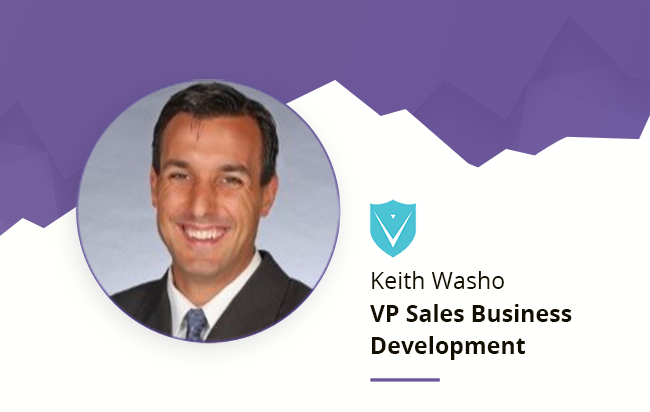
It’s easy to be impressed by Keith Washo. Author of two books on success, guest lecturer at Duke University, and musical composer, he is also an award-winning speaker who frequently presents at conferences and corporations. He’s an entrepreneur at heart, with over twenty years of sales experience. Earlier this summer, at a Research Triangle HubSpot User Group, Keith shared his 4-step framework for using marketing to position a product for sales success. Aligning marketing and sales together to drive revenue, called RevOps, is growing in importance as companies are realizing how important it is to focus on preventing losing leads and sales as well as increasing repeat sales
To Keith, sales begins with having a great product, and then building a strong marketing program with clear messaging around it. He cautions that great marketing can be a double-edged sword. If you have a strong product, your marketing program can help your sales soar. However, if your product is weak, great marketing will simply make your bad product fail faster.
Keith’s four-step framework is intuitive and easy to grasp, and makes you wonder why more businesses aren’t using this page from his playbook:
- Understand top features and benefits
- Communicate clearly – start with feature and end with benefits
- Prepare for objections
- Close and call for action
Let’s get inside the Keith Washo four-step program.
Features and Benefits
I find that many businesses struggle to differentiate between features and benefits. When discussing features, they’ll use phrases like "user friendly" or "helps my customer solve X." Then they will talk about product features while discussing benefits.
So, it seems that some definitions are in order. Features describe your product. Dimensions, materials and functions are three different types of features. If you have an eight-inch rechargeable flashlight that can light up a surface 30 feet away, you’ve just described three different features of your flashlight.
Benefits, on the other hand, are the end result of what the product can do for you. Continuing on with our flashlight example, benefits could include the ability to see in dark corners, or that you never need to replace the batteries during a blackout. If your flashlight is lightweight, the benefit is that you can easily carry it with you.
According to Keith, the first step is having a firm grasp of your product or service’s key features and benefits. Both features and benefits provide your customers with important information during their customer journey. However, as important as the features of a product may be, benefits are what sell your customer on your product.
Start with Features, Sell with Benefits
When describing your product or service, Keith advocates leading with features. You want your target market to understand what it is that you are selling. If you’re selling international online banking services, begin by letting them know you will help them with making and accepting international payments.
However, as you continue with your pitch, you’ll start to tell them about the benefits your service includes. Through your service, your customers will experience easier transactions, lower fees, and faster service.
Every product or service will have a different spin on benefits, and it should be tailored to your particular audience. A start-up audience without an existing network of international banks would appreciate the benefit of an easy international account set up, while an existing business that has already developed their international banking network would be open to lower costs.
Prepare for Objections
When you’re selling something, it can be hard to imagine a qualified prospect rejecting your offer. Despite that, customers will try to come up with reasons not to buy. That’s why Keith believes that preparing for objections is the third step in the process.
Create your best pitch, and then try to tear it apart. Make a list with every possible objection you can imagine. It may help to have a colleague try and punch holes in your sales pitch as well.
Once your list is finished, go through each item, and develop responses to each objection. For issues with pricing, talk about the value customers are receiving, or for an objection about timing, explain why this is the right time to buy. The better prepared you are with your responses, the more likely you’ll be able to overcome objections and move closer to the sale.
Keith does caution marketers against raising objections that the customer hasn’t brought up yet. Although you already have the answer to the objection, giving a prospect new reasons to say no can cost you the sale.
Call for Action
The final step in Keith’s method is a call to action. At this point in the process, you want the customer to do something. Depending on your sales process, this could be anything from signing a contract to clicking the "Buy" button on your eCommerce shopping cart.
For simple, low priced transactions much of this process is completed in one customer interaction. For larger purchases and deals, this process can take months, and involve multiple marketing and sales teams working together to develop a sustainable, scalable customer journey.
However, regardless of your customer journey, the four steps Keith advocates will take you from the beginning of your customer engagement through the end of the sales cycle.
A Final Thought
Sales professionals often continue trying to sell their product even after the client has made a purchase decision. Keith finds this practice turns off customers, who find the practice annoying and unnecessary.

by The Penguin Team on August 01, 2019
As a leading B2B digital marketing agency, We help B2B Technology Companies, enterprise software, and hardware companies increase brand awareness, reach more qualified leads and close more customers. Penguin Strategies is a Diamond Partner of HubSpot.





